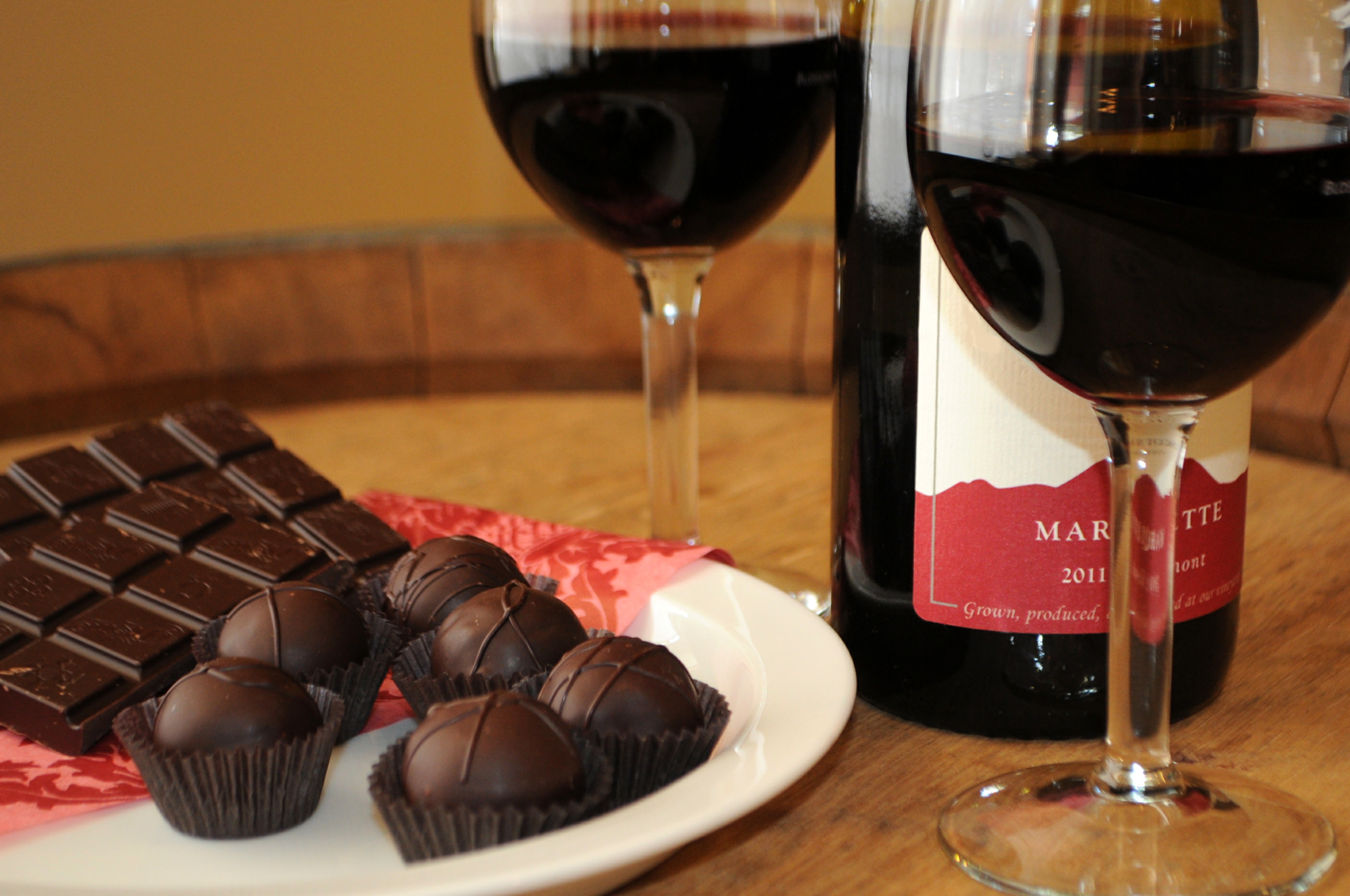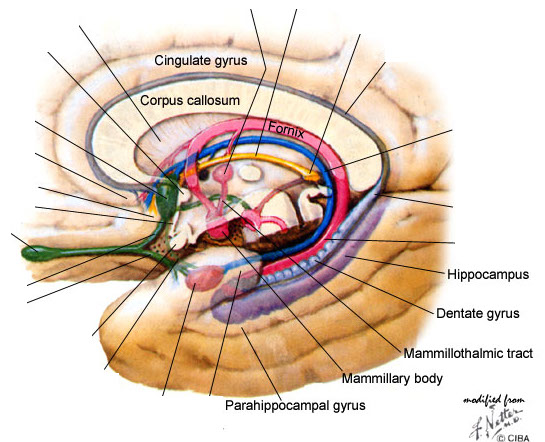
Chocolate and Red Wine: The Cure to the Cognitive Deficits of Aging?
When was the last time you watched a TV show without seeing an advertisement for some sort of anti-aging cream, herbal supplement or medication that promised to help with the effects of aging? Although many products have been produced to assist with the physical effects of aging, not many are advertised to help with the cognitive deficits. We all know that with a normally aging brain comes decreased processing speed, mental flexibility, ability for solving problems or maintaining attentiveness and increased forgetfulness. The question is why do these things happen, and is there a way to prevent them? New studies say that common foods such as chocolate and red wine may be the key to attenuating cognitive decay due to aging.
So how is a memory formed?
Basically, the neurons change in the brain as a result of experience by changing the pattern of synaptic connectivity between neurons. ‘Neurons that fire together, wire together’ is a common saying to describe this phenomenon which basically means that once a synaptic connection has been formed in response to a stimulus, it increases the likelihood there will be a response the next time, i.e. long term potentiation. In addition to this synaptic formation, there are other effects on the cellular level such as forming dendritic spines, which are little protrusions off of a dendrite that serve as a storage site for synaptic strength.

Learning and memory formation occur primarily in the pyramidal neurons of the hippocampus through these changes. The hippocampus is critical for contextual and spatial learning and awareness, navigation, and episodic memories, and it transfers this information to the neocortex to form long-term memories. Although it is unclear exactly how the hippocampus transfers information to the neocortex, it is thought to be related to the hippocampal formation sending synaptic messages to the neocortex promote consolidation mechanisms in the neocortex itself.
 “An example of two sibling apical tuft branches with different degrees of spine formation 24 hours after training. Filled arrowheads indicate newly formed dendritic spines and open ones indicate eliminated spines over a 24-hour interval. Asterisks indicate dendritic filopodia.” (From Yang, 2014)
“An example of two sibling apical tuft branches with different degrees of spine formation 24 hours after training. Filled arrowheads indicate newly formed dendritic spines and open ones indicate eliminated spines over a 24-hour interval. Asterisks indicate dendritic filopodia.” (From Yang, 2014)
One of the things that makes the hippocampus so adaptable to learning is its unique form of neural circuit plasticity all throughout life referred to as “adult hippocampus neurogenesis”. Aging is associated with a decrease in this neurogenesis because although it doesn’t affect the number or survivability of putative hippocampal neural stem cells, it increases the fraction of these cells that are inactive. In addition to this the aged Hippocampus shows chronic mild inflammation, decreased availability of certain pro-neurogenic factors and decreased microvasculature. These effects are most consistently seen in the Dentate Gyrus, a region of the hippocampus particularly involved in a pattern of separation of visually similar objects. Impairment of this region is one of the key reasons for memory and mood dysfunction in old age.

Studies on Chocolate and Red Wine
Recent studies found that oral consumption of epicatechin, a dietary flavonal in in cocoa, shows a selective enhancement of DG function, which improved cognitive performance. Epicatechin causes an increase in dendritic spine density, which is correlated with increased capillary density, and therefore causes an increase in cerebral blood flow. Because of this increase in cerebral blood flow, researchers were able to use fMRI in addition to cognitive testing to study the effects of a high-flavonal diet in aging patients, and found that it enhanced DG function.
Another compound called Resveratrol has also been studied in relation to its effects on age-related memory and mood dysfunction. Using peritoneal injections in mice, they found improved learning, memory and mood function after four weeks. Multiple analysis showed that this was caused by an increased net neurogenesis and microvasculature within the hippocampus as well as a decreased astrocyte hypertrophy and microglial activation (the two factors that cause chronic inflammation).
So does this mean binge eating Chocolate and having some Red Wine should become your fool-proof study routine? Not exactly. The oral doses that they found effective of epicatechin was about 138 mg, and in order to get that amount of epicatechin, you would need to eat six 45 g Hershey’s chocolate bars. To get the effective dose of resveratrol (90 mg), you would need to drink about 45 bottles of wine first. So although there were interesting effects seen, it is an over-exaggeration to think that you could consume enough of either through simply eating to make an significant impact on your long term memory.
Works Cited
Barrientos, R.m., M.m. Kitt, L.r. Watkins, and S.f. Maier. “Neuroinflammation in the Normal Aging Hippocampus.” Neuroscience (2015): n. pag. Web.
Baruch, K., A. Deczkowska, E. David, J. M. Castellano, O. Miller, A. Kertser, T. Berkutzki, Z. Barnett-Itzhaki, D. Bezalel, T. Wyss-Coray, I. Amit, and M. Schwartz. “Aging-induced Type I Interferon Response at the Choroid Plexus Negatively Affects Brain Function.” Science 346.6205 (2014): 89-93. Web.
Brickman, Adam M., Usman A. Khan, Frank A. Provenzano, Lok-Kin Yeung, Wendy Suzuki, Hagen Schroeter, Melanie Wall, Richard P. Sloan, and Scott A. Small. “Enhancing Dentate Gyrus Function with Dietary Flavanols Improves Cognition in Older Adults.” Nature Neuroscience Nat Neurosci 17.12 (2014): 1798-803. Web.
Kodali, Maheedhar, Vipan K. Parihar, Bharathi Hattiangady, Vikas Mishra, Bing Shuai, and Ashok K. Shetty. “Resveratrol Prevents Age-Related Memory and Mood Dysfunction with Increased Hippocampal Neurogenesis and Microvasculature, and Reduced Glial Activation.” Sci. Rep. Scientific Reports 5 (2015): 8075. Web.
Miller, Kenneth B., William Jeffery Hurst, Mark J. Payne, David A. Stuart, Joan Apgar, Daniel S. Sweigart, and Boxin Ou. “Impact of Alkalization on the Antioxidant and Flavanol Content of Commercial Cocoa Powders.” J. Agric. Food Chem. Journal of Agricultural and Food Chemistry56.18 (2008): 8527-533. Web.
Roy, H., and S. Lundy. “Resveratrol.” Pennington Nutrition Series 7 (2005): n. pag. Web.
Yang, G., C. S. W. Lai, J. Cichon, L. Ma, W. Li, and W.-B. Gan. “Sleep Promotes Branch-specific Formation of Dendritic Spines after Learning.” Science 344.6188 (2014): 1173-178. Web.